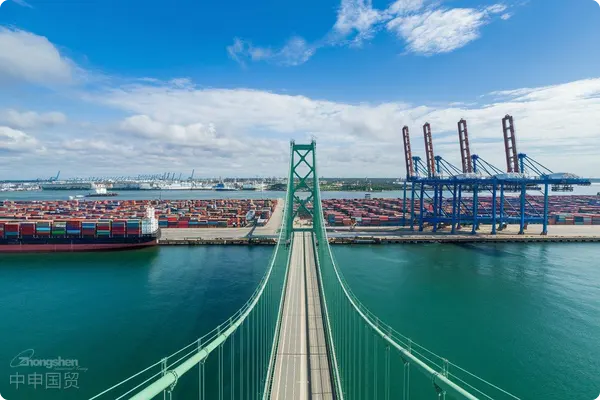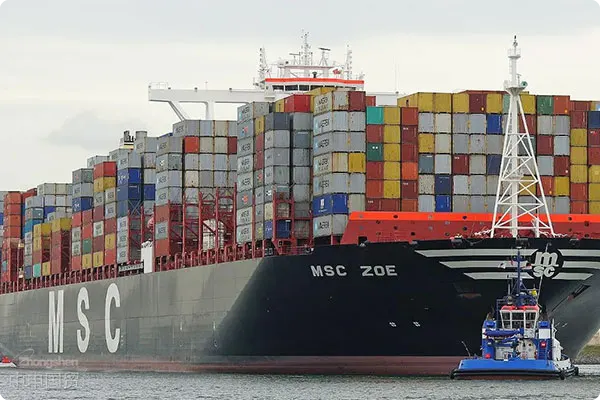- Shanghai Zhongshen International Trade Co., Ltd. - Two decades of trade agency expertise.
- Service Hotline: 139 1787 2118
For enterprises engaged in Sino - US trade, successfully entering the US market not only requires professionalImport Representationservices, but also離不開systematic brand protection layout. Data shows thatIn Q1 2023, 32% of Chinese goods seized by U.S. Customs were intercepted due to trademark infringement, and as high as40% of Chinese export brandshave not done well before entering the US marketintellectual property protection.. How to avoid these export traps?

I. The core value of Chinese import agents in the development of the US market
Professional import agency can provide clients with:
Internationally - recognized Safety StandardsCompliance Escort for Qualifications: Ensure that importers have mandatory certifications such as US FDA/FCC/CPSC, and avoid the risk of customs clearance obstruction (A baby product enterprise had $200,000 worth of goods detained at the customs due to the lack of CPSC certification).
Regional Mandatory CertificationsSupply Chain Optimization Services:
- Supplier Classification Management System (Focus on verifying the brand authorization chain in the US)
- Dynamic Monitoring of Logistics Costs (The express shipping line between China and the US can reduce transportation losses by 15%)
Cultural and Religious NormsRisk Early - Warning System: Monitor high - incidence infringement categories through customs data (In Q1 2023, 32% of Chinese goods seized by the US customs were involved in trademark infringement).
II. Practical guide to the whole process of US trademark registration (with a list of pitfalls to avoid)
First stage: Brand strategic positioning
- Pre - market Screening:
Use the USPTO TESS system + commercial database for dual - retrieval (Pay attention to avoiding risks of similar pronunciation/graphics, such as the trademark opposition case of “MiCROSOFT”). - Precise Classification Layout:
It is recommended to register a combination of core categories + defensive categories (A home furnishing enterprise constructed a protection matrix through Class 21 (Kitchenware) + Class 35 (E - commerce)).
Second stage: Preparation of application materials
- Construction of the Integrity of the Evidence Chain:
Evidence of use in the US should include real sales records (Data from the back - end of Amazon stores needs to be notarized). - Application of the Priority Strategy:
Decision - making tree for the choice between Madrid trademark extension and local US application (Attached with a cost comparison table)
Third stage: Review cycle management
- Respond to the review opinions of the USPTO:
Key Points for Drafting Professional Attorney Letters (Case of a descriptive trademark making a comeback through “secondary meaning”). - Monitoring Mechanism during the Announcement Period:
Establish an opposition early - warning response mechanism for competitors (A trademark of an electronic product was opposed by the squatting party on the 28th day of the announcement).
III. Practical strategies for trademark protection in the import process
In - depth supply chain review
- Establish the “Three Certificates and Two Letters” verification standard for suppliers (The brand authorization letter needs to be certified by a US notary institution).
- Essential Clauses in the OEM Agreement: The agreed infringement compensation shall not be less than 200% of the value of the goods.
Double insurance of customs filing
- Operation Guidelines for US Customs Recordation (CBP Recordation):
- The interception success rate of infringing goods after recordation is increased to 97%.
- Dynamic Update Mechanism for Recorded Information (Appearance patent information needs to be updated synchronously during product iteration).
Terminal Market Protective Net
- Advanced gameplay of Amazon Brand Registry:
- Practical Operation of the Transparency Program to Prevent Follow - selling
- Regularly conduct anti - infringement monitoring of the Buy Box (Automatically scan ASIN changes every week).
IV. Response Plans for Typical Risk Scenarios
Scenario 1: Sudden Infringement Allegation
- Three - step Emergency Response:
① Fix the infringement evidence chain within 72 hours.
② Launch the backup supply chain switching plan.
③ File a Declaratory Judgment Action (DJ Action) through the US federal court.
Scenario 2: Encountering Malicious Trademark Squatting
- Transnational Rights - protection Path:
Apply Article 14 of the US Trademark Law (Cancellation procedure for non - use for three consecutive years).
Collect evidence of prior use and initiate an opposition (A tea brand successfully invalidated a squatted trademark with the exhibition records of the Canton Fair).
V. Cost - Benefit Analysis Model
| Protection Measures | Initial Investment Cost | Avoidance of Potential Risk Losses | ROI cycle |
|---|---|---|---|
| Basic Trademark Registration | $800-1500 | $200,000 | 6 months |
| Customs Recordation + Monitoring System | $3000+ | $1,000,000+ | 3 months |
| No Protection Taken | $0 | $5,000,000+ | / |
Conclusion
Against the backdrop of the continuous increase in the compliance thresholds of Sino - US trade, the coordinated construction of professional import agency services and brand protection systems has become the lifeline of enterprises going global. It is recommended that enterprises establish a trinity brand management mechanism of “registration - monitoring - rights protection” and choose import agency partners with both Chinese and US qualifications and a local legal team.
(Note: The data in this article is cited from the USPTO 2023 Annual Report and the public data of the US Customs and Border Protection.)
Related Recommendations
? 2025. All Rights Reserved. 滬ICP備2023007705號-2  PSB Record: Shanghai No.31011502009912
PSB Record: Shanghai No.31011502009912










